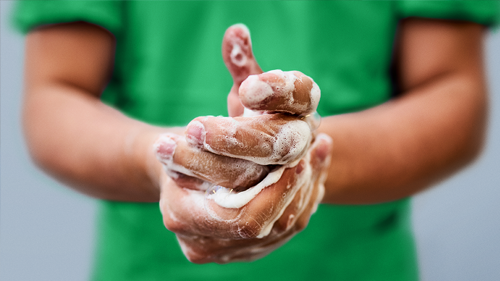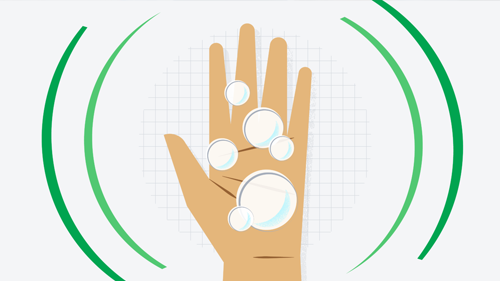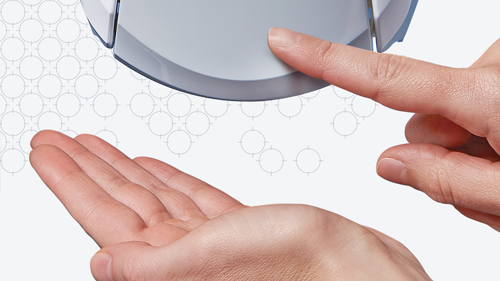Direct observation of hand hygiene: 7 steps for accurate data
Discover an evidence-based approach, based on the WHO’s 5 Moments.

Not long ago, the head of infection prevention at a community hospital asked me how to design a robust direct observation program for hand hygiene. The hospital was getting ready for an upcoming visit by The Joint Commission, and this leader wanted to be able to show the most accurate hand hygiene compliance data possible.
Even though direct observation has its share of shortcomings—not the least of which is lack of accuracy resulting from the Hawthorne Effect1, lack of agreement among observers (interrater reliability) and/or observer bias—it’s still the most widespread method for measuring hand hygiene performance.
For this reason, I thought it would be worth sharing the direct observation program for hand hygiene that I developed for this one hospital, including how I got there.
Evidence-based approach
I started by drawing upon a landmark study2 that for the first time scientifically determined the number of hand hygiene opportunities (HHOs) that occurred in various settings. The study did so by taking a disciplined approach to direct observation that was based on the World Health Organization’s (WHO) 5 Moments for Hand Hygiene.
I then developed the following summary and checklist for implementing this same approach so that hospitals can get hand hygiene compliance data that’s as accurate and reliable as can realistically be expected from direct observation. Here is what that looks like:
Checklist for a robust direct observation program
Note: Apps for capturing and compiling direct observation data on smart phones and tablets are available from your app store or provider. Simply follow the app instructions if you’re using one of these. The manual process is addressed in Steps 3, 4 and 5.
Step 1: Train observers
- Totally familiarize observers with the WHO 5 Moments.
- Complete formal training by having observers watch WHO Hand Hygiene training films and accompanying slides.
- Practice direct observations with a lead observer or infection prevention manager providing feedback and coaching.
Step 2: Assess interrater reliability
Practice direct observation routinely to ensure consistent data collection. In its simplest form, observers could conduct direct observations together and compare results. A lead observer could also accompany observers to reinforce consistent results.
Step 3: Conduct direct observation
Observe hand hygiene behavior using the WHO Data Collection Tool or a modified version such as the one used in the HOW study.2 Another option is a monitoring tool created by Johns Hopkins Medicine. The following general fields should be completed:
- Before observation begins, fill out the top part of the header except for end time and duration.
- Take no more than 20 minutes to observe.
- Record HHOs in the appropriate column and fill in the square corresponding with the indications for hand hygiene detected.
- Record hand hygiene events (HHEs or hand hygiene actions) observed or missed for each indication.
- Record glove use only when an HHE occurs while the healthcare worker is wearing gloves.
- Record end time and duration at the end of the session.
Step 4: Compile the data
Enter data from each observation form into a master database, such as Microsoft Excel. Aggregate the total number of HHEs for a period and divide by the total number of HHOs to determine the compliance rate for specific periods of time (week, month, quarter, year) for specific units as well as for the entire organization.
Step 5: Chart and share progress
Create and share performance graphs and appropriate reports with unit and organization leadership.
Step 6: Provide frontline staff feedback
Once you’ve entered a report, give frontline workers feedback on their performance as soon as possible.
Step 7: Create performance improvement action plans
Hold units and departments responsible and accountable for action plans to eliminate specific barriers and obstacles to proper hand hygiene behavior.
While data from direct observation may be overstated, if collected consistently, it should provide a sound tool for measuring hand hygiene compliance and the programs in place to drive and sustain it.
(With thanks to the HOW2 authors for the creative research that inspired this column.)

VP Patient Safety Innovation for Medline Industries, LP
Paul invented the first electronic hand hygiene monitoring system designed to improve hand hygiene performance while reducing infections and costs. He is an innovative and mission-driven leader with more than 35 years of experience in hand hygiene and patient safety solutions. Paul also shared hand hygiene insights as a past contributor to Healthcare Hygiene Magazine.
Disclosure: Medline was a 2021 member of the Leapfrog Partners Advisory Committee and has a collaborative relationship with a company that offers electronic hand hygiene monitoring services.
References:
- Srigley JA, Furness CD, Baker GR, Gardam M. Quantification of the Hawthorne effect in hand hygiene compliance monitoring using an electronic monitoring system: a retrospective cohort study. BMJ Qual Saf. 2014 Dec;23(12):974-80.
- Steed C, Kelly JW, Blackhurst D, Boeker S, Diller T, Alper P, Larson E. Hospital hand hygiene opportunities: where and when (HOW2)? The HOW2 Benchmark Study. Am J Infect Control. 2011 Feb;39(1):19-26.




